Sony Alpha A7 (ILCE-7) and Sony Alpha A7r (ILCE-7r) vs rest of theworld. Part 1.
Meanwhile, here are few shots and thoughts, that you can take a look at.
If you like those unpacking videos, here is mine 🙂
https://www.youtube.com/watch?v=yYHvOwG6aJc
Post your questions, I will try to answer them as they come.
MFT forum community is quite busy those days. They are permanently looking for the reasons, why their Oly EM-1 and Panasonic GX7 still makes sense, after Sony launched A7s.
Don’t get me wrong, I like my EM-5 but it is a different camera tool. It is versatile, well built, with solid image quality. I would expect it however to be much smaller and lighter, once it has so small sensor. The price, size and form put it against Sony E mount cameras, but the much smaller sensor is keeping it behind. In terms of image quality and low light usablity.
But they have with Sony A7/7r one thing in common. Both are ugliest camera bodies that I ever had in my life, including many Russian tough contenders (in that respect). Goodbye dear, stylish NEX (on the right). I will miss your curves… (I know, I know, it’s me and my deformed taste…)
So, back to the IQ – ISO 6400 is not what I shot every day, but you can get the idea about what the difference in sensor size means in low light.
Resolution in the center after equalizing image size with Olympus.
I can hear you MFT fans – “that’s not fair, you should enlarge them to A7r size…” Ok.
Is the difference really that big? That all depends on our own criteria. Usually what we have, is big enough right? Just don’t directly compare it with the bigger one.
Seriously – Oly is a great camera. To be fair, you might notice the difference in resolution if you print very large, or make huge crops. For web use and normal size prints (including A3), Oly EM-5 (and I guess EM-1) are good more than enough.
Sure, there are those DOF issues, but they goes both direction, and longer reach with larger DOF is quite useful sometime.
But there is something more about high resolution, that people usually don’t mention. Post processing. Higher input resolution gives you more information to work with. If you are extensively working in pp on your images, you will understand what I am talking about. This is for me much more important than any other difference.
In the sample image bellow, I equalized contrast in 100% crops, because edges are naturally so dark, that you wouldn’t be able to judge acutance and resolution. All camera corrections were switched off, but I wasn’t able to get rid of vignetting even at f/8, using Sony Image Data Converter.
Do you see the left side being a bit softer than the right one as I do? De-centering? So what, it’s only 800 USD lens (actually 1000 USD where I live). Hopefully, it is just my mistake.
I mentioned less color shift in the corners with SEL 1018, but don’t trust those who are telling you, that SEL 1018 works well in FF mode on A7r (from 12mm on). It doesn’t, because of a very complicated distortion in the corners. (That stairs are straight in reality)
I mean, you will cover full sensor from 14mm -18mm, but if you can live with that amount of distortion in the corners, I honestly think that you can save a lot of money, buying much cheaper camera.
On the other hand, SEL 1018 f/4 OSS works fairly well in the crop mode, and you can happily walk away with 4800 x 3200 px image. That is… 15,36mp! Two cameras in one 🙂
Putting aside my doubts about FE 35/2.8, I was curious to see, how will A7 with it compare with NEX 7 and Zeiss 24/1.8.
While on A7, vignetting and color shift is less pronounced, it is still quite visable. And that is at f/8!!!
Center is almost indistinguishable, left corner is sharper with SEL 2418 on NEX 7, while right corner is sharper with A7 and FE3528. Right corner is closer to the camera, so that could cause loss of sharpness, but left corner is certainly within DOF of the focus plane, and that makes me nervous.
Otherwise, in this particular case, I would rather choose NEX 7 and SEL 2418 than A7 and FE3528, because the price difference right now is significant, and IQ and FOV, almost same.
I need to make more comparisons however, but I also need more time and better weather, and none seems to be coming soon 🙁
Here are few shots with other lenses on A7r.
A7r + Canon TS-E 17 f/4 + Metabones SA III
One funny thing happened while i was testing TS-E. Somewhere deep in my mind, I wanted to believe that it will cover FF sensor of A7/7r with Metabone SB. TS-E lenses usually have much larger projection circle, because… well you can shift them quite o lot on both sides.
CV Nokton 50/1.1 wide open has heavy vignetting but insignificant color shift. Stopped down, it looks very good.
A7r + CV 21/1.8 Ultron
I have read somewhere that this lens works without issue on A7r. Well, it doesn’t as you can see. But this amount of vignetting and color shift can be corrected. There is no big difference in amount of color shift wide open and stopped down to f/5.6, which is rather strange. However wide open, there is much more pronounced light fall in the corners.
A7r + CV Nokton 35/1.2 Asph. II
Surprisingly, CV Nokton 35/1.2 Asph. II work very well stopped down to f/5.6. In the extreme corners are however signs of hard vignetting even at this aperture. Fortunately, they are very small. Wide open, this lens is very soft except in the center of the frame, where it is rather soft. But that is its character.
A7r + Konica 28/2.8 Hexanon M
No luck with Konica. Pronounced color shifting, but light fall off doesn’t look bad at f/5.6. This should be easy to correct with Adobe Flat field and similar plug-ins.
A7r + Leitz Wetzlar Summicron 40mm f/2
Cute little lens, that works quite well. I would like a bit stronger contrast, but otherwise, it is nice combination.
A7r + CV Nokton 50/1.5 Asph. (new)
This is beautiful lens and it works well with new Sony A7r. I expect this lens to be my standard fifty on A7r. Wide open there is significant vignetting but very small color shift. Vignetting is a part of this lens character, so it doesn’t matter to me.
Other parts of this rolling review:
Part 2
Part 3
Part 4
Part 5
Part 6
Part 7
Part 8
Part 9 – A7 vs A7r Final Showdown
Please help support this page and upcomming reviews and buy through affiliate links, with no extra cost for you:
Buy on BHPhoto: Alpha a7 Mirrorless Digital Camera
Buy on Amazon: Alpha a7 Mirrorless Digital Camera
To help this page survive, your donation will be highly appreciated.
![]()






























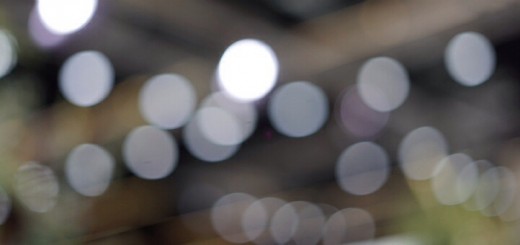
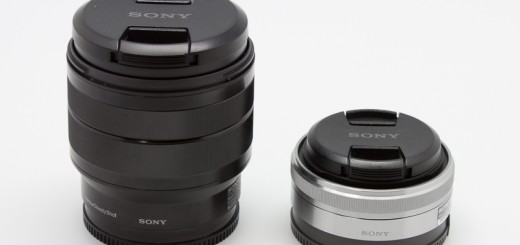
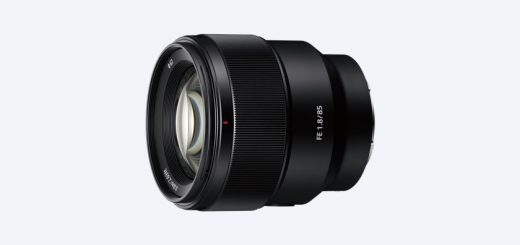
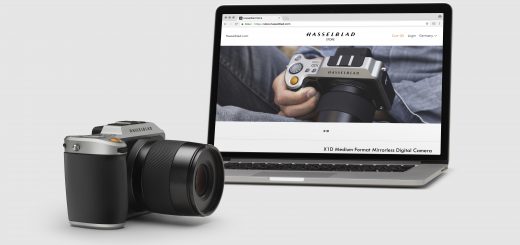
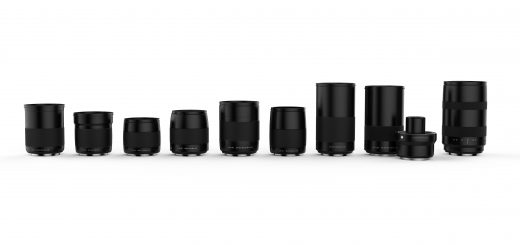
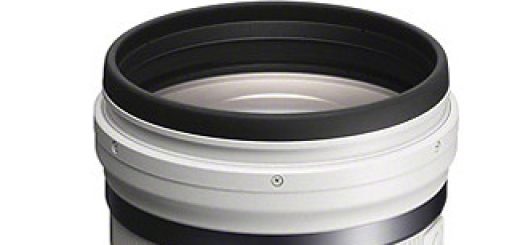
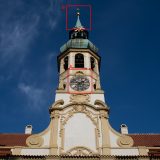
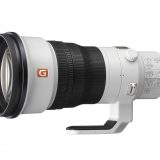
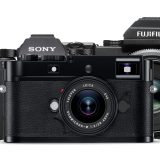
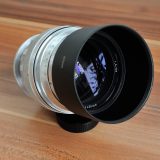
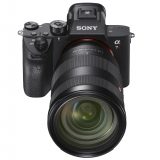
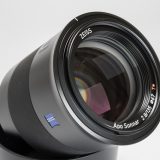

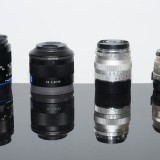
Wow, Viktor, among all the nonsense published on this new pair of cameras, your review stands out as very professional and full of information, rather than opinion. Congratulations!
Thank you so much.
Thanks Viktor for your writeup. I am also seeing the issues you report with my FE35 on the A7R, including slightly soft left side. I think the lens has been optimised for near subjects with nice bokeh rather than landscapes. Comparing the FE35 with my C/Y 35-70/3.4 at 35, what I notice is that the C/Y gets really sharp at f/8 across the frame, leaving the FE35 behind. I’m not sure at the moment whether I will keep the FE35, I suspect the Zeiss manual FE mount lenses that should be around this time next year will suite me better.
Can I ask you how the CV 33/1.2 behaves at f/8 compared to the FE35? Does it carry on improving, and what are the edges like? I’m wondering getting one instead if it can double up usage with soft wide open and sharp at f/8, like I see with the CV50/1.5.
Thanks Jonathan. I just get back from a whole day of shooting with FE35/2.8 and CV35/1.2II. I will need few days to process and doublecheck all findings, but it shouldn’t take too long. So far it seems that CV35/1.2II doesn’t show pronounced color shift, but vignetting is very heavy and it doesn’t fully dissapear at any aperture. However, I need to doublecheck this on my power computer at the office.
I decided in the end to return my FE35 – whilst it does some things nicely, I realised in the end that the thing that bugged me the most was its ergonomics. I found that for landscape shots, the autofocus would often choose the wrong target (eg when lots of branches around). That led me to needing to manually focus it and I just found it not as nice as a fully manual lens like my CV50/1.5. Plus I realised that with the CV50 I was setting approx focus and aperture as I took the camera out of my bag – the FE35 I had to do everything when it was up at my eye. If the FE35 had been a little cheaper I may have kept it.
My CV35/1.2 vII should arrive tomorrow 😉
Hi,
excellent and informative review!
I only wanted to add that OMD-E5 shouldn’t be compared on ISO basis, because as DXOMARK documents, except for ISO100, the E5 cheats a full stop and more with its ISO setting:
http://www.dxomark.com/Cameras/Compare/Side-by-side/Sony-NEX-6-versus-Olympus-OM-D-E-M5-versus-Sony-NEX-7___832_793_736
So ISO3200 is only ISO1489. Whereas the Nex 6 & 7 which only cheat half a stop, are at ISO2330-2617!
This makes comparisons not useful unless both camera are forced to fixed shutter speed & aperture and then left with Auto-Iso to compensate. Or the viewer compares accordingly…
Best regards,
Crix
Thanks a lot.
Regarding Olys ISO issue – you might fall into ISO trap whatever method you choose. I know about this DxO findings, but they are measuring sensor on a very specific way, that has few drawbacks too…
For this review, I decided to reduce the amount of light by stops, instead of prolonging shutter speed. Main reason was to exclude possibility of shutter shock vibrations, that could slightly blur the image and thus compromise results (could appear as with less noise). Of course, because I did tests in my home studio, where I have white walls and furniture, by reducing main light, I did influence light reflections all around and thus my results couldn’t be scientifically 100% correct. But as I like to state, my results might indicate trends – approximate results to show tendencies. In that respect, I did find Olympus files to be slightly underexposed (main exposure was measured with external light-meter using readings for incident and reflected light). However, from this real life test, I haven’t noticed more than half a stop for Oly. But even that doesn’t must to mean much, because Olympus might apply additional correction in RAW files, such as boosting ISO and applying more NR. What matters is that images from all cameras are noise wise at least – very good IMHO, especially for real life use.
By the way, since you own both the A7(r) and the speedbooster, I would love to hear from you whether the combination of a Nex with SB can be seen as good alternative to a A7? Or whether the image degradation is visible? Thanks a lot!
Crix
High Crix, I will certainly jump on it, just give me few more days to finish what I started 🙂
I was hoping you’ll get your hands on those, and here it is! 🙂 I find your opinions and tests on lenses to be 100% accurate with my own findings, so I’m waiting impatiently on follow-up review parts. So far, do you think the improved resolution on A7r is worth going for, over A7? Just sold my D700, and can’t decide which to get (currently have samyang 35, 85 and cv35, but eventually hope to replace them with that new 24-70 and 55, perhaps keep the sammy85)
High Daniel and thank you for your kind words. I will post soon some comparable images so that you can judge yourself. I would say, that more resolution is usually good thing, but it certainly has some negatives too. One of the main is RAW file size. Sony probably apply some lossy compression, so that A7r files are smaller than my Nikon D800E lossless compressed RAWs, but they are still huge, and once you unwrap them, unless you have super fast computer, you might find waiting time annoying. I am not speaking about editing itself, but even viewing, selection, transfer and storage, all that takes longer than most were used to. There is also slower flash x-sync time on A7r and of course higher price. At the end, it always depend on the intended use, but I think that unless you want to crop more or print very large, A7r is not such a clear choice.
Great reading – nice review 🙂
I’m thinking A7R – most of my lenses are SLR style and not M-mount (I just have the Nokton 35/1.4). It’s a good lens, and I agree with a previous comment about it probably not being optimised for landscapes. I’m considering getting an A7R and keeping the RX1 alongside.
Hi Martin, I suppose you are not in hurry (having RX1), so I would advice to wait a little while the hype settle down. I have some problems in my initial tests, and I need to repeat them, because on several occasions I am getting sharper images for A7 than A7r with FE 38/2.8. I suspect shutter vibration problem, but it could easily be some of my testing mistakes. Anyway, if not in a hurry, it is better to wait a while and follow web.
best regards,
Viktor
Very nice post. In my opinion, however, these camera comparisons are not fully comparable. I hope I didn’t misread your pics (is the first
at ISO 3200 or 6400, since the text talks about ISO 6400, the pic has ISO 3200). Nevertheless I agree with the basic fact that a bigger sensor gives you better possibilities regarding DOF, ISO and resolution, for example.
But it’s important to use equivalence principles to compare things, otherwise, you’re comparing apples to oranges. Equivalence means having the same FOV, DOF, exposure, meaning one needs to compare
a m43 25/1.4 ISO 200 with a FF 50/2.8 at ISO 800 (see http://www.josephjamesphotography.com/equivalence/#3 or http://www.clarkvision.com/articles/dof_myth/index.html.). It then comes down to sensor specifics, whether
one is better than the other. However, a FF gives you the opportunity to go to lower ISO or lower f-stops,
a big advantage over m43 (albeit at the expense of changing the DOF, becoming too small, eventually, or by changing the exposure) and provides a larger number of line widths/picture height, naturally. I have an OMD and a D600
and usually go with the m43 due to the lower weight, since for DINA4 prints the difference in image quality is really negligible up to ISO 3200.
The only thing I admire most at FF is the shallow DOF for flower shots. This however works fine now with
the Voigtländer 0.95 lenses I obtained recently. So is there a need for a Sony?.
I think so, because the Sony could be the single camera, making maintaining
two systems obsolete. The only thing which maybe isn’t possible is to develop fast zoom lenses including image stabilization. Image stabilization is something I really miss in the A7.
It very much depends how you look at it… I am not comparing sensors in terms of their light gathering capability and SNR. There are much better equipped labs for doing so, and no matter how their methods might be reliable or relevant better to say, they can provide you with a data that are important to you.
What I did, is to put camera in a real life simulation.
I just asked myself – if I will have a scene that is lit with certain intensity (and quality), and I will have a choice of cameras – which one will give me better results…
1. FOV
My test chart is my model – I want it to fill the frame (I want to use maximum resolution of my system to show my subject). This makes FOV comparable, because, that is what I will do in a real life – with m4/3 I will pull back to get my chart in composition, with FF I will move forward.
2. LENS AND DOF
If I would use different lenses (and apertures) to equalize for DOF, I will put another extreme variable to quotation – lens optical performance. This has nothing to do with my task – I want to see which camera will do better job, not which system will. (That is of course another possible approach, but with even more variables leading to less comparable results). Using this method in a real life, will of course result in different DOF. But stopping lens down (in FF) to equalize DOF will again result in a different optical performance. At f/5.6 lens should be at it’s peak performance and thus noise can be more visible, and I don’t want it to be. The solution is to shot the flat target at the same f-stop. Flat target comfortable fits within DOF and critical plane of focus is at the same position. Noise is more comparable this way.
3. APERTURE, SHUTTER SPEED
Changing aperture will significantly influence results because of the above mentioned lens performance at different apertures. Keeping the aperture and changing only shutter speed, might involve different effect of shutter shock vibrations. Keeping both – shutter speed and aperture and using ND filters will be another possibility, but filters might involve another variables and I didn’t want that.
Getting back to our real life analogy – My test chart is my model, there is only that much light, and I want that aperture. I can’t go bellow minimum shutter speed, so that one is fixed too. To change the ISO, I need to change the amount of light and that’s what I did.
So if you look on my test in terms of absolute figures such as SNR, it is not a valid test. If you look at it from the user point view – this is my lighting situation and I want to see which camera (not system – camera + lens) will give me best results, than my method is very solid. Not perfect thus, because of the light reflections that are changing not only quantity but also quality of light.
For me in reality, in a low light situations, the most important will be to get the best ratio between minimum shutter speed and ISO (noise). I would probably keep my lens wide open or close to that, and I will try to push my shutter speed as high as possible, before noise starts to be too destructive. In that regard, FF has a huge advantage over m4/3. But if you put IS in calculation for the static subjects, things might get more equal. It all depends on what you are planning to shot.
I almost never use IS, because it can and does affect ultimate resolution of your sensor. While it will give you better results in most circumstances than hand holding, I simply carry tripod and use it instead of IS, because I don’t care about size. Again, it is all about priorities.
I am afraid and that is pity for sure, that days of m4/3 are getting to the end. I was very unhappy when Canon killed APS-H format and will feel the same for APS-C one day. But m4/3 is probably first to go… However, I still hope it won’t happen over night.
Really appreciated this post Viktor! I’m glad to see how the new A7+SEL35f28 lens stacks up against the nex7+SEL2418. After reading the section on uncropped vs cropped SEL1018, I was hoping to see a similar section for the SEL2418z.Would you share your comments (and if at all possible, pictures) on how the 2418z renders when mounted to the A7/A7r in uncropped mode?
I will try Ali. Daytime is short now and it all takes much longer than I tought.
Thanks for review, it was excellent and very informative.
thank you 🙂